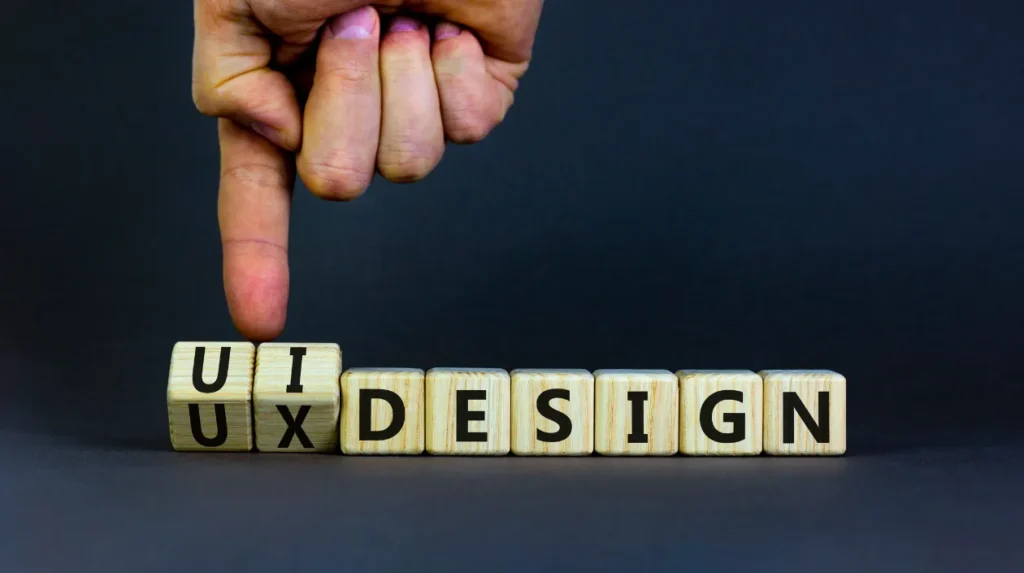Introduction: The Synergy Between SEO and Web Design
In the competitive world of digital marketing, both SEO (Search Engine Optimization) and web design are crucial components for the success of any website. However, they are often treated as separate disciplines—SEO focuses on improving search engine rankings, while web design focuses on the aesthetics and functionality of a site. In reality, these two elements must work together seamlessly for a website to perform optimally.
A well-designed website that isn’t optimized for search engines will struggle to attract visitors, no matter how appealing its visuals are. Similarly, a website that is highly optimized for SEO but lacks a user-friendly, aesthetically pleasing design is likely to see high bounce rates and low engagement. In this blog, we’ll explore why SEO and web design must work in tandem and how the integration of both can create a website that is not only visually compelling but also discoverable and functional.
1. The User Experience (UX) and Its Impact on SEO
One of the primary intersections between SEO and web design is user experience (UX). How users interact with your website plays a significant role in both your search engine rankings and your ability to convert visitors into customers. Google’s algorithm places a high value on user experience, rewarding websites that are easy to navigate, quick to load, and mobile-friendly.
How UX Affects SEO:
Mobile-Friendly Design: With the shift to mobile-first indexing, Google prioritizes mobile-friendly websites in its search rankings. A responsive web design ensures that your site adapts to all screen sizes, improving user experience and boosting your SEO.
Site Speed: Page loading speed is a critical ranking factor for SEO. Well-designed websites that optimize images, scripts, and other elements for faster loading times lead to a better user experience and improved search rankings.
Navigation and Structure: Websites with intuitive navigation and clear, user-friendly layouts keep visitors engaged longer, reducing bounce rates. A well-organized site structure also makes it easier for search engines to crawl and index content, improving overall SEO performance.
By prioritizing UX in web design, businesses create an experience that not only satisfies users but also aligns with search engine algorithms, improving both user satisfaction and SEO outcomes.
2. Content and Keyword Strategy Integration
Content is king when it comes to both SEO and web design. However, creating high-quality content is only part of the equation. Properly integrating keyword strategies into your content is essential to ensure that it is both discoverable by search engines and valuable to your audience. When web design and SEO strategies align in content creation, it ensures that the website is both aesthetically appealing and easy to find.
How Content and SEO Impact Web Design:
SEO-Friendly Content Layout: Web design affects how content is structured on a page. A well-designed site ensures that your content is easy to read, with clear headings, subheadings, bullet points, and images, all of which improve the user experience and make it easier for search engines to understand and index the content.
Keyword Optimization: Incorporating target keywords into content is essential for SEO. Web designers must collaborate with SEO specialists to ensure that content is structured in a way that allows keywords to be strategically placed in headings, meta tags, URLs, and throughout the text.
Internal Linking: Effective internal linking helps both users and search engines navigate your site. A well-designed website includes a logical, accessible linking structure that promotes better indexing of pages and improves the overall SEO of your site.
Content creation and keyword optimization must go hand-in-hand with web design to ensure that visitors not only engage with the content but also find it easily through search engines.
3. Mobile-First Design and SEO
With the rise of smartphones and tablets, mobile internet usage has surpassed desktop browsing, making mobile-first design a crucial consideration for both web design and SEO. Google’s mobile-first indexing means that Google primarily uses the mobile version of your website for ranking purposes. Therefore, your website’s mobile design plays a direct role in its search engine visibility.
How Mobile-First Design Impacts SEO:
Mobile Optimization: A responsive web design ensures that your website functions properly on all devices, from mobile phones to desktops. Google rewards websites that deliver an excellent mobile experience with higher rankings.
Site Speed on Mobile: Mobile users expect fast load times. Websites that are optimized for speed on mobile devices are favored by Google’s algorithm, improving both user experience and SEO.
Improved User Engagement: Mobile users tend to have different browsing behaviors, including more frequent and shorter visits. Ensuring that your site is optimized for mobile viewing increases engagement, reduces bounce rates, and enhances the overall user experience.
A mobile-first approach to web design not only enhances user experience but is also critical to improving SEO performance as search engines increasingly prioritize mobile-friendly websites.
4. SEO-Friendly URL Structures and Site Architecture
A well-organized site architecture ensures that search engines can easily crawl and index your content. The URL structure and site navigation play a significant role in both web design and SEO, as they help define how information is organized and accessed.
How URL Structure and Navigation Impact SEO:
Clean URL Structure: SEO-friendly URLs are short, descriptive, and keyword-rich. For example, a URL like
example.com/blog/benefits-of-seois not only user-friendly but also helps search engines understand the page’s content. This is influenced by the website’s design and URL setup.Silo Structure: A good web design ensures that content is organized logically, creating a silo structure that enhances SEO. Grouping related content together makes it easier for both users and search engines to navigate your site and understand the relationships between different pages.
Breadcrumb Navigation: Breadcrumbs are a key feature of web design that not only improve the user experience by showing users their location within the site but also provide search engines with valuable information about your site’s structure.
Having an SEO-friendly website architecture ensures that both search engines and users can navigate your site easily, improving both rankings and user satisfaction.
5. Meta Tags, Alt Text, and Image Optimization
Images are an essential part of web design, helping to break up content and improve visual appeal. However, images need to be optimized both for performance (faster load times) and SEO. Proper image optimization and the use of meta tags ensure that search engines can index your content correctly.
How Image Optimization and Meta Tags Impact SEO:
Alt Text: Web design plays a role in ensuring that images are properly tagged with descriptive alt text. Alt text helps search engines understand the content of images and is also important for accessibility, as it allows screen readers to describe images to visually impaired users.
Image Compression: Large images can slow down website loading times, which negatively affects SEO. A well-designed website ensures that images are compressed without compromising quality, improving page load times and overall user experience.
Meta Tags: Meta descriptions and title tags provide concise information about the content of a page, helping both search engines and users understand what the page is about. These elements should be integrated into the web design process to enhance both the user experience and SEO.
Image optimization and proper use of meta tags are essential for both enhancing user experience and improving SEO performance.
6. Analytics and Data-Driven Web Design
A strong online presence depends on continuous improvement, and this is where analytics play a crucial role. Combining web design with SEO-driven insights allows businesses to refine and enhance their website based on real user data.
How Analytics Drive Design and SEO Decisions:
A/B Testing: Both SEO and web design benefit from A/B testing. Web design changes, such as layout variations, can be tested alongside SEO tactics to determine what works best for both user engagement and search rankings.
User Behavior Tracking: Analytics tools allow businesses to track how users interact with their site. By using data on bounce rates, click-through rates, and conversion rates, web designers and SEO specialists can make informed decisions on how to improve user experience and optimize content.
Performance Metrics: Monitoring performance metrics like page load times, mobile performance, and SEO rankings provides ongoing feedback that can be used to continuously improve the website design and its SEO strategy.
Using data to inform both web design and SEO practices ensures that your website remains competitive and continuously optimized for user experience and search engine performance.
Conclusion: SEO and Web Design—A Unified Strategy for Success
SEO and web design are not separate silos; they are two sides of the same coin. A well-designed website that isn’t optimized for search engines will struggle to attract visitors, while a website that is optimized for SEO but poorly designed may drive users away. By integrating SEO principles into the web design process, businesses can create websites that not only look great but also perform well in search engines, engage users, and drive conversions.
If you’re building or redesigning a website, make sure that SEO and web design are part of a cohesive strategy. When these elements work together, they create a seamless experience for both users and search engines, ensuring that your website achieves its goals and contributes to the long-term success of your business.
Unlock Your Brand's Full Potential with Zolofox!
At Zolofox, we specialize in creating compelling brand identities, driving engagement through strategic social media marketing, and building stunning websites that capture attention. Whether you’re looking to elevate your brand’s presence or create a seamless digital experience for your customers, we have the expertise to help you succeed.
Ready to take your business to the next level?
Contact us today to get started with personalized solutions that make an impact!



